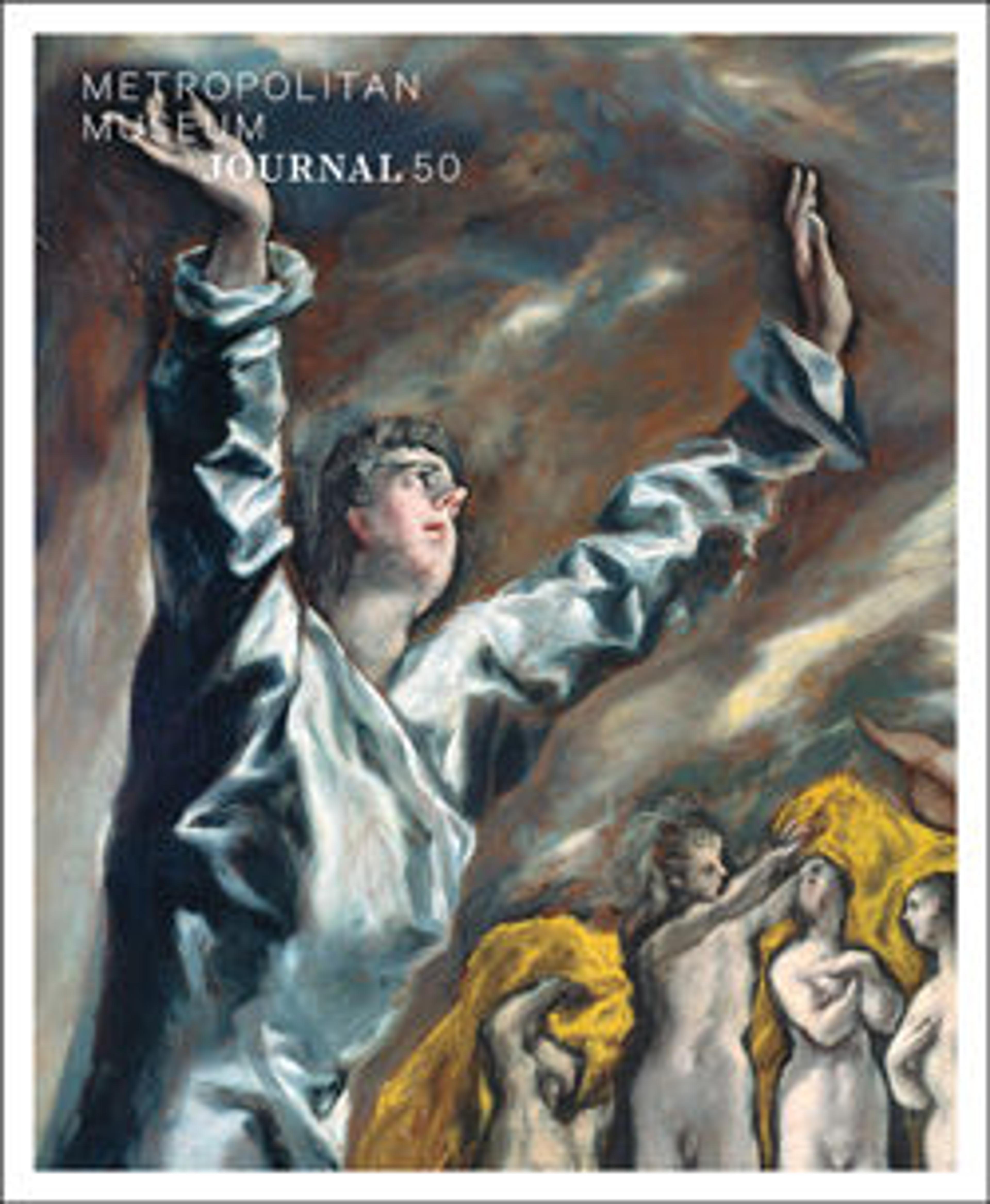Terracotta volute-krater (mixing bowl)
The volute krater, named for its spiral-shaped handles, is a typical Greek vessel first produced in Athens in the sixth century BCE. Monumental kraters such as this one are typical of the Apulian red-figure production that developed between ca 440 and 300 BCE in the region of the Greek colonies of Taranto and Metaponto in Southern Italy, where they were used as tomb markers in cemeteries. The preference for this shape (which by the time had fallen out of favor in mainland Greece), the enormous size, and the places where they were found indicate that Apulian kraters were produced principally for the local Italic market. In the final decades of the fourth century, the Baltimore Painter―who painted this krater―was a prolific artist probably based in the indigenous settlement of Canosa, where this vase was discovered.
On the obverse, Paris, the Trojan prince, is seated in the center. He listens to Hermes who has brought the three goddesses to him. Aphrodite, accompanied by Eros, is in the upper left. Hera, holding her scepter, is seated in the upper right. Athena, below Paris, is also seated, leaning on her shield, wearing her helmet. She is attended by two youths, who are dressed like Paris. At the extreme left, Pan observes the scene. Underlying the bucolic scenery, this tale, in which Paris must decide which one of the goddesses is the most beautiful, is the symbol of the Trojan war’s origin, anticipating death and sorrow, a suitable topic for a funerary vase.
The reverse shows the statue of a young woman standing in a small temple-like funerary monument―a naiskos―a typical representation on Apulian red-figure kraters. She represents the deceased and is surrounded by boys and girls bearing offerings.
On the obverse, Paris, the Trojan prince, is seated in the center. He listens to Hermes who has brought the three goddesses to him. Aphrodite, accompanied by Eros, is in the upper left. Hera, holding her scepter, is seated in the upper right. Athena, below Paris, is also seated, leaning on her shield, wearing her helmet. She is attended by two youths, who are dressed like Paris. At the extreme left, Pan observes the scene. Underlying the bucolic scenery, this tale, in which Paris must decide which one of the goddesses is the most beautiful, is the symbol of the Trojan war’s origin, anticipating death and sorrow, a suitable topic for a funerary vase.
The reverse shows the statue of a young woman standing in a small temple-like funerary monument―a naiskos―a typical representation on Apulian red-figure kraters. She represents the deceased and is surrounded by boys and girls bearing offerings.
Artwork Details
- Title:Terracotta volute-krater (mixing bowl)
- Artist:Attributed to the Baltimore Painter
- Period:Late Classical
- Date:ca. 330–310 BCE
- Culture:Greek, South Italian, Apulian
- Medium:Terracotta; red-figure
- Dimensions:H. with handles 30 5/16 in. (77 cm); H. to rim 26 3/4 in. (68 cm)
- Classification:Vases
- Credit Line:Purchase, Mrs. James J. Rorimer Gift, 1969
- Object Number:69.11.7
- Curatorial Department: Greek and Roman Art
More Artwork
Research Resources
The Met provides unparalleled resources for research and welcomes an international community of students and scholars. The Met's Open Access API is where creators and researchers can connect to the The Met collection. Open Access data and public domain images are available for unrestricted commercial and noncommercial use without permission or fee.
To request images under copyright and other restrictions, please use this Image Request form.
Feedback
We continue to research and examine historical and cultural context for objects in The Met collection. If you have comments or questions about this object record, please contact us using the form below. The Museum looks forward to receiving your comments.
